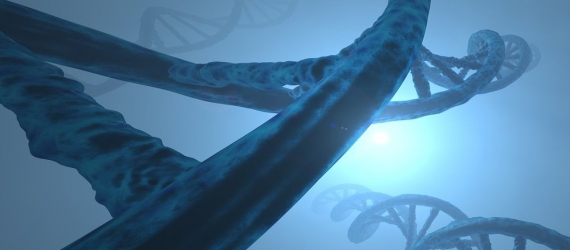 https://www.splice-bio.com/wp-content/uploads/2018/10/rsz_life-time-459224_1280.jpg
750
1000
Splice
https://www.splice-bio.com/wp-content/uploads/2020/12/Splice-logo.png
Splice2018-10-10 10:51:122021-09-20 10:08:37Europeans Will Say Goodbye to Daylight Saving Time
https://www.splice-bio.com/wp-content/uploads/2018/10/rsz_life-time-459224_1280.jpg
750
1000
Splice
https://www.splice-bio.com/wp-content/uploads/2020/12/Splice-logo.png
Splice2018-10-10 10:51:122021-09-20 10:08:37Europeans Will Say Goodbye to Daylight Saving Time https://www.splice-bio.com/wp-content/uploads/2018/10/rsz_life-time-459224_1280.jpg
750
1000
Splice
https://www.splice-bio.com/wp-content/uploads/2020/12/Splice-logo.png
Splice2018-10-10 10:51:122021-09-20 10:08:37Europeans Will Say Goodbye to Daylight Saving Time
https://www.splice-bio.com/wp-content/uploads/2018/10/rsz_life-time-459224_1280.jpg
750
1000
Splice
https://www.splice-bio.com/wp-content/uploads/2020/12/Splice-logo.png
Splice2018-10-10 10:51:122021-09-20 10:08:37Europeans Will Say Goodbye to Daylight Saving Time
Genetically Engineered Viruses Seek and Destroy E. coli in Drinking Water
Food scientists from Cornell University have developed a test for rapid detection of E. coli in drinking water using genetically-engineered bacteriophages. It can be administered locally in hard-to-reach areas around the world and provides results…

Skeletal Stem Cells Identified in Humans for the First Time
Researchers from Stanford have identified human skeletal stem cells that become bone, cartilage, or stroma. Cells were recovered from fetal and adult bone marrow and were also derived from induced pluripotent stem cells. This discovery will…

Illuminating the Microbiome to Better Health
Australian researchers have shown for the first time that laser therapy can be used to alter the population of gut bacteria in mice. The findings, if confirmed in humans, could help in the treatment of diseases such as diabetes.
Our guts…

Fed Up with Pharma, Hospitals Are Making Drugs Themselves
A group of major American hospitals established a nonprofit generic drug company, Civica Rx, to battle long-lasting shortages of critical medicines and their high prices. Their goals are providing stable supplies for 14 generic drugs used…

New Technique Enables 3D Mapping of the Human Genome
Almost 20 years ago the human genome, 3 billion DNA base pairs long, was first sequenced. Despite all the progress researchers still know little about how the genome is organized within cells. Now researchers from the University of Illinois…

Host v. Parasite – Climate Change Edition
Many living organisms can expect to have some freeloaders: other organisms that live on or inside and may or may not prove harmful to it. When that tends to be a positive relationship for both parties, it is called a symbiotic relationship,…

New Technology Solves a Key Puzzle of Cellular Memory
Researchers from the University of Copenhagen used a new advanced technique to identify a protein that is responsible for cellular memory transfer in cell division. The finding is decisive for a fresh view and understanding of development from…

New Study Unravels How Blue Light Contributes to Blindness
Researchers from The University of Toledo have found the chemical reason behind why blue light damages our eyes over time, contributes to macular degeneration, and can even cause blindness. Since we're spending more time in front of screens…

Scientists Squeeze Entire Yeast Genome into Just One Chromosome
Two separate research groups used CRISPR gene editing to fuse entire sets of brewer’s yeast chromosomes together, resulting in two strains with just one and two chromosomes. Surprisingly, the changes had little effect on most functions of…
Most popular
Best Electronic Lab Notebooks (ELN Reviews) in 2024December 13, 2023 - 8:00 am
Best Single-cell RNA Sequencing Data Analysis SoftwareJanuary 3, 2022 - 8:46 am
The Next Generation Of Antivenom Production Holds Many Possibilities For The FutureMarch 17, 2021 - 8:19 am
Connected Laboratory & the Role of IoT in ScienceFebruary 4, 2020 - 4:02 pm
The Importance of Better Digital Data Management in Laboratories and The FAIR FutureFebruary 4, 2020 - 3:06 pm
Tags
aging
animal
bacteria
brain
cancer
cell culture
Contamination
CRISPR
data
detection
diabetes
diagnostics
disease
dPCR
drug
Ebola
evolution
food
genome
Genomics
GMO
immune system
lab automation
laboratory
microorganisms
mutation
NGS
PCR
pipetting
plant
protein
qPCR
scientific project
scientific publication
SciNote
sequencing
space
stem cells
test
therapy
tumor
vaccine
virus
water
Zika
